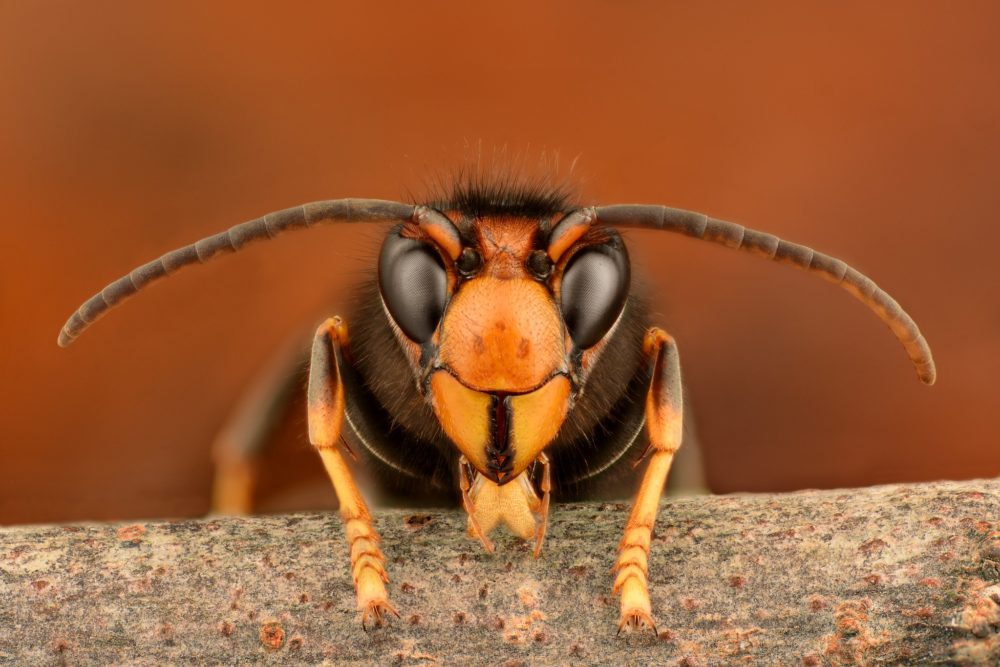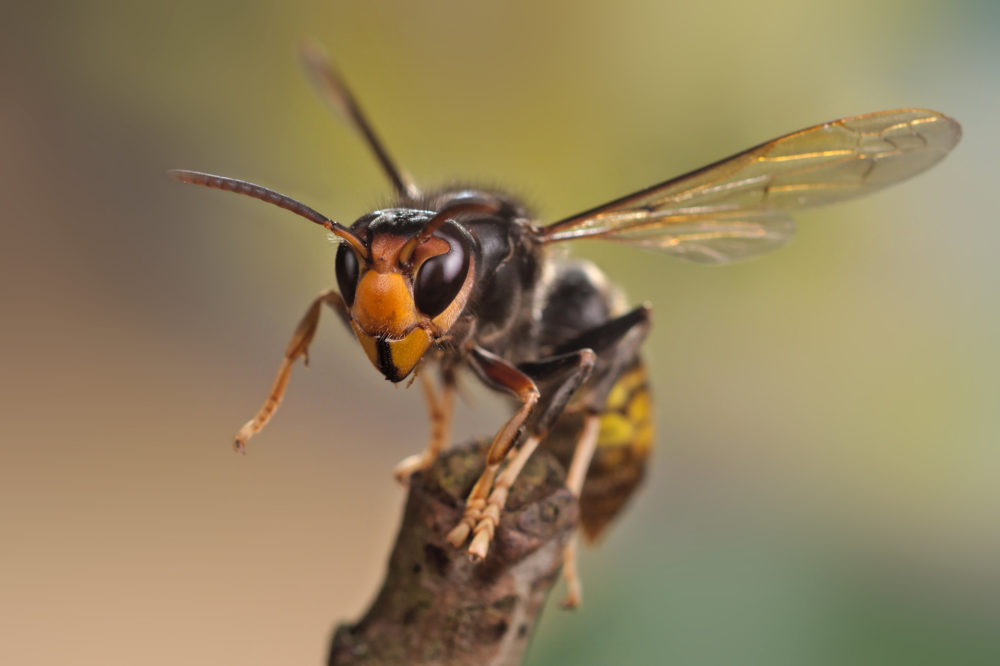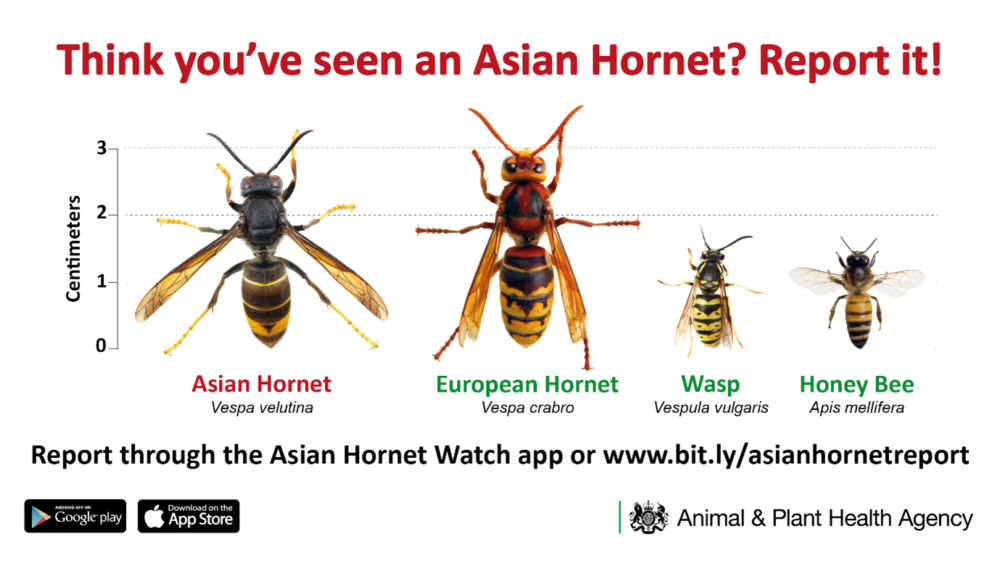The Yellow-Legged Asian Hornet has reached the UK: why the concern?

A destructive and potentially dangerous, invasive insect has made its way to the UK.
As the weather warms up, the evenings draw out and the sun starts to grace us with its presence a bit more often, you’ll no doubt be expecting to see more flying insects around – and some of them you’ll probably be a bit wary of, because you know they can sting.
But are you keeping an eye out for yellow-legged Asian hornets? Or are those words completely alien to you? If they are, now is the time to familiarise yourself with this invasive insect – it could make a huge a difference to our native wildlife, and you might avoid a nasty run-in with them too.
Threat
The British Beekeepers Association says it is working tirelessly to make as many people as possible aware of the threat posed by the yellow-legged Asian hornet, and to encourage any sightings to be reported via an official app.
First discovered in the UK in 2016, the insect has travelled to our shores from western Europe, where there are now over half a million nests annually in France alone.

By 2022, just 16 Asian hornet nests had been discovered in the UK. But in 2023, this increased dramatically to 72 nests in 56 different locations – more than in the previous six years combined.
Kent and other counties along the south coast of England took the brunt of the incursion, but there have been sightings in locations across the UK, including as far north as Scotland.
There have already been confirmed sightings in March this year, a month earlier than in previous years, raising fears that they could become established here without an effort on an unprecedented scale to track, locate and destroy nests.
Why worry?
So why the concern? What is it about the yellow-legged Asian hornet that has created such a worry about what 2024 might bring?
Put simply, they have the capacity to wreak havoc on our wildlife in the UK, through their destruction of honey bee colonies, and their predation on a number of other insect species.
Their habit of hovering outside bee hives stops the bees from going out to collect nectar and pollen to feed themselves. Just one nest of hornets can consume up to around 11kg of insects in a year.
By now, most people are aware of just how important pollinators are to our own health and wellbeing, and the security of our food chain.
This could have huge consequences on our wider ecology, with many beekeepers calling it the greatest threat to our native pollinators in a generation.
Public health concerns
And there’s concern that the increasing numbers of yellow-legged Asian hornets could pose a significant risk to public health too.
While one hornet alone is unlikely to cause a problem, they can be aggressively defensive of their nests, which can be built low to the ground and in hedgerows and brambles, meaning disturbances by unsuspecting individuals could have dangerous consequences.
In the same way you wouldn’t mess with a wasps’ nest, it’s best not to come into contact with Asian hornet nests either.
On the Channel Island of Jersey, an army of volunteers has been brought together over the last seven years to cope with a situation that now sees hundreds of nests discovered every year.
Some of these nests have even been found underground. When you consider the vast array of situations where an unsuspecting member of the public could come into contact with a nest, it’s easy to see why everyone needs to be made aware of this risk – and fast.
So how do you know what to look for?
Well, they can be identified by their very distinct markings: they’re slightly smaller than our native European hornet, which is two or three times the size of a common wasp, and are black with an orange face, a thin yellow band near the middle and a broader orange/yellow band around their abdomen, near the tail.
The most distinguishing characteristic is their bright yellow legs, like they’ve been dipped in a pot of yellow paint – hence the name.

So, keep your eyes open this spring and summer
Look high and low, and if you think you see a yellow-legged Asian hornet, be sure to report it! Download the official Asian Hornet Watch app from your app store, and log any sightings, along with a photo if possible.
It’s available for both Android and iPhone devices. Experts from the Government’s National Bee Unit (NBU) will then be able to identify if there’s a nest nearby, and if so, destroy it.
If you think you see these insects coming and going from a nest – keep your distance! Stay at least 10 metres away to keep yourself safe.
And spread the word.
Tell your neighbours, your friends, your colleagues…share the app on social media, ask for posters to be put up in nearby shops, raise the issue with your local council, your local MP, and in your schools.
Communication is key: the more people who know about this insect, the more chance we have of limiting its impact.
For more information, including the latest updates and ways in which you can help share awareness, take a look at the British Beekeepers Association’s website.
Support our Nation today
For the price of a cup of coffee a month you can help us create an independent, not-for-profit, national news service for the people of Wales, by the people of Wales.





Where in Wales?
What do they look like? A front facing photo of the head isn’t entirely helpful? I’m seeing only black Bees (not yellow and black) so that’s confusing. I stopped to check out a nest walking round Brenig in Denbighshire last night but again all black looking. So plenty of pictures and where they’ve been sighted would be useful. If any one finds a hornets nest; use What3Words app to get the coordinates and then call the British Bee Keeper Association to call in an ‘Airstrike’…
Click on read more after first part of article,more info and picture description there.
Through the use of “pesticides,” including neonicotinoids (which are known to be harmful to bees), the numbers of insects in the uk is a tiny fraction of where the numbers should be.
Nature abhors a vacuum, so it is inevitable we would see migration of a species to occupy the vacancy.
If humans didn’t interfere in the first place nature would’ve been in a far healthier state than what we have at present!
They are about 3 inches long and sound like a lawn mower ,i was in the caravan in Powys, and thought he’s already cut the grass .but no it was an hornet. Don’t attack them they send a signal to the other hornets its being attacked this was last year.